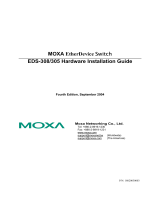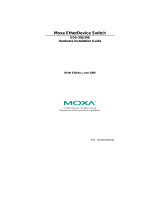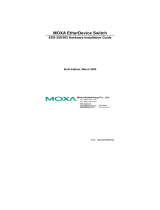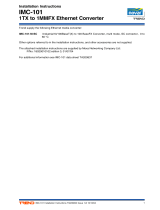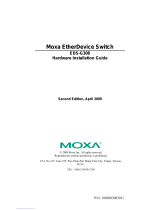
- 11 -
Specifications
Modular Managed Switch System, EDS-72810G/82810G
Modular Managed Switch System with 6 slots, and up to 28 ports.
IEEE802.3, 802.3u, 802.3x, 802.1D, 802.1w, 802.1Q,
802.1p, 802.1X, 802.3ad, 802.3z
IGMPv1/v2, GMRP, GVRP, SNMPv1/v2c/v3, DHCP
Server/Client, BootP, TFTP, SNTP, SMTP, RARP,
RMON, HTTP, HTTPS, Telnet, Syslog, DHCP Option
66/67/82, SSH, SNMP Inform, Modbus TCP, LLDP,
IEEE 1588 PTP, IPv6
EDS-828:
MIB-II, Ethernet-Like MIB, P-BRIDGE MIB, Q-BRIDGE
MIB, Bridge MIB, RSTP MIB, RMON MIB Groups 1, 2.3,
IEEE802.3x flow control/back pressure
6 slots for any combination of 4-port Interface Modules
with 10/100BaseT(X) or 100BaseFX
2 sockets for any combination of 2-port Interface
Modules with 10/100/1000BaseT(X), and
1000BaseSX/LX/LHX/ZX SFP modules
STAT, PWR1, PWR2, FAULT, MASTER, COUPLER,
T.RING
Module LED
LNK/ACT, FDX/HDX, RING PORT, COUPLER, PORT,
Two relay outputs with current carrying capacity of 1 A
@ 24 VDC
Two inputs with the same ground, but electrically
isolated from the electronics.
• For state “1”: +13 to +30V
• For state “0”: -30 to +3V
• Max. input current: 8 mA















